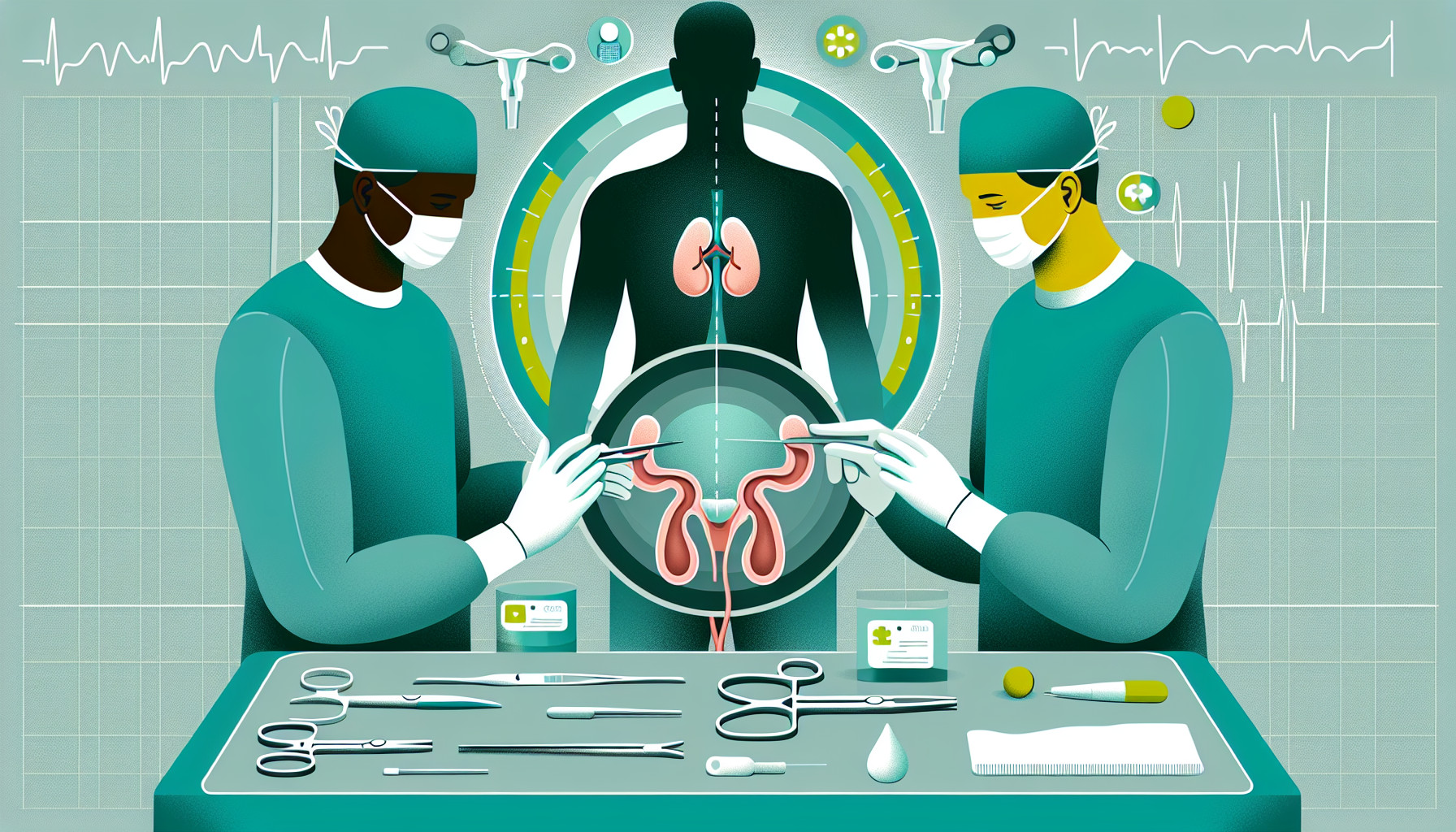Our Summary
This research paper is about the different types of surgeries used to treat serious bladder cancer. The traditional way of doing this is through a procedure called cystectomy, which is still considered the best treatment. However, a new method using robots has been growing in popularity because it often results in quicker recovery, less blood loss, and less pain after surgery.
One of the problems that can happen after these surgeries is something called uretero-enteric strictures (UES), which is a kind of narrowing that can cause issues for patients. The research aimed to compare the rates of UES in the three different types of surgery: traditional cystectomy, robotic surgery with external urinary diversion (ECUD), and robotic surgery with internal urinary diversion (ICUD).
The researchers found that traditional surgery had the lowest rate of UES at 9.6%, while ECUD had a rate of 12.4% and ICUD had the highest rate at 15%. They also found that ICUD had the longest time before UES occurred, while traditional surgery had the shortest operating time.
While robotic surgeries are becoming more popular, they do have a learning curve and might not be as effective at preventing UES as the traditional method. The researchers suggest that more studies, including randomized controlled trials, are needed to figure out the best surgical option for patients to minimize the risk of UES.
FAQs
- What is uretero-enteric strictures (UES) and how does it affect patients after bladder cancer surgery?
- How do the rates of UES compare between the traditional cystectomy, robotic surgery with external urinary diversion (ECUD), and robotic surgery with internal urinary diversion (ICUD)?
- What are some advantages of robotic surgeries in treating bladder cancer, and what are the potential downsides?
Doctor’s Tip
One helpful tip a doctor might give a patient about cystectomy is to discuss the potential risks and benefits of different surgical approaches, including the traditional method and robotic surgery options. It’s important for patients to understand the potential complications, such as uretero-enteric strictures, and to weigh these risks against the potential benefits of each surgical approach. Patients should also ask their doctor about their experience with the different surgical techniques and inquire about the specific outcomes and recovery times associated with each option. Ultimately, the decision should be made in collaboration with the medical team to ensure the best possible outcome for the patient.
Suitable For
Patients who are typically recommended cystectomy include those with:
- High-grade invasive bladder cancer that has not responded to other treatments
- Muscle-invasive bladder cancer
- Non-muscle invasive bladder cancer that is high-risk or has recurred after initial treatment
- Patients with a history of bladder cancer who have developed multiple tumors
- Patients with a large tumor that cannot be removed through other methods
- Patients with certain types of bladder cancer that are not responsive to chemotherapy or radiation therapy
It is important for patients to discuss with their healthcare provider the risks and benefits of cystectomy, as well as potential alternatives, before making a decision about their treatment plan.
Timeline
Before cystectomy:
Diagnosis of serious bladder cancer: Patients may experience symptoms such as blood in the urine, pelvic pain, frequent urination, or urinary tract infections, leading to a diagnosis of bladder cancer.
Consultation with a urologist: Patients will meet with a urologist to discuss treatment options, including cystectomy, which involves the removal of the bladder.
Pre-surgery preparation: Patients will undergo tests to assess their overall health and fitness for surgery, as well as counseling on the potential side effects and complications of cystectomy.
Surgery: The cystectomy procedure is performed, either through traditional open surgery or robotic-assisted surgery.
After cystectomy:
Recovery in the hospital: Patients will spend several days in the hospital recovering from surgery, receiving pain medication and monitoring for complications.
Adjustment to changes in urinary function: Patients will need to adjust to changes in urinary function, which may involve the use of a urinary diversion system to collect and remove urine from the body.
Follow-up appointments: Patients will have regular follow-up appointments with their healthcare team to monitor their recovery and address any concerns or complications that may arise.
Long-term care: Patients will need ongoing care and support to manage any long-term side effects of cystectomy, such as urinary incontinence or sexual dysfunction.
What to Ask Your Doctor
Some questions a patient should ask their doctor about cystectomy include:
- What are the different types of cystectomy surgeries available for treating bladder cancer?
- What are the potential risks and benefits of each type of cystectomy surgery?
- How does the risk of uretero-enteric strictures (UES) compare between traditional cystectomy, robotic surgery with external urinary diversion, and robotic surgery with internal urinary diversion?
- What is the rate of UES occurrence for each type of surgery?
- What is the typical recovery time and potential complications associated with each type of cystectomy surgery?
- How experienced is the surgical team in performing the specific type of cystectomy surgery being recommended?
- Are there any alternative treatment options to consider besides cystectomy?
- What steps can be taken to minimize the risk of developing UES after surgery?
- Are there any ongoing clinical trials or research studies investigating the effectiveness of different cystectomy surgeries in preventing UES?
- What long-term follow-up care and monitoring will be necessary after undergoing cystectomy surgery?
Reference
Authors: McNicholas DP, El-Taji O, Siddiqui Z, Hanchanale V. Journal: J Robot Surg. 2024 Feb 28;18(1):100. doi: 10.1007/s11701-024-01850-9. PMID: 38413496
